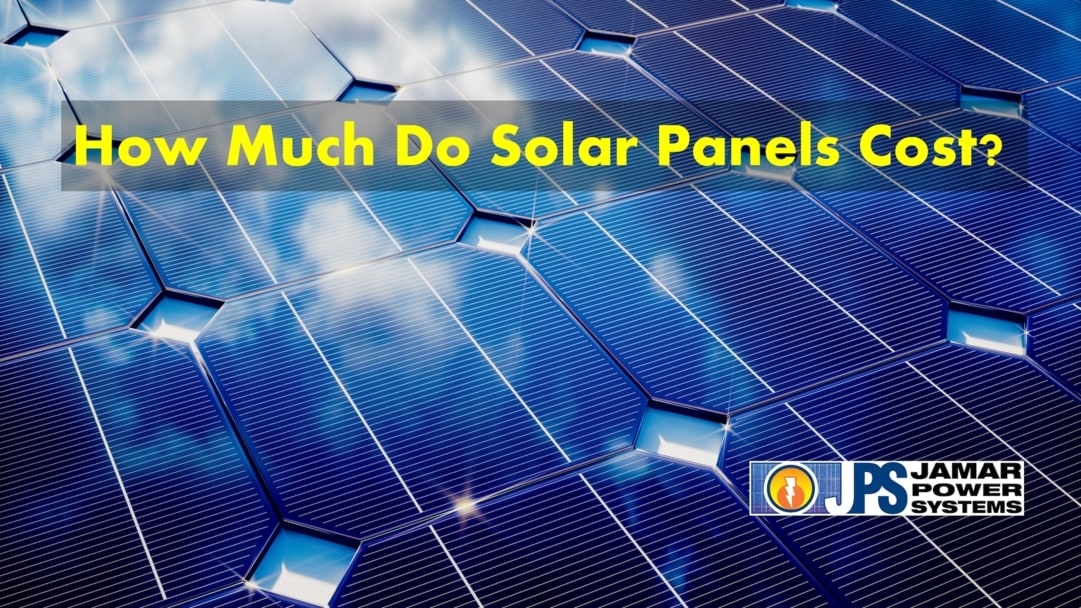“How much” is the most common question people ask when buying anything, including solar panels.
At the beginning of the journey to find out, a price range is usually given to consumers; why is that?
The answer is because there are many variables and some choices that shape the price you’ll pay.
There are product costs, installation costs, and base costs that go into the final price of every solar energy system.
Let’s examine the components of what goes into the final price quote.
These are the primary factors that determine how much solar panels will cost:
- the licensed solar installer you choose
- your average electric bill costs
- your annual electricity usage
- solar panel type & efficiency rating
- rated wattage of solar panels
- quantity of solar panels needed
- inverter type and quantity needed
- available roof or ground mounting space
- shading on installation
- compass direction the solar panels will face
- the tilt angle of the installation
- roof age and condition
- financing method
- base costs (see list below)
- Federal income tax credits available
- latitude and longitude of your property
How much do solar panels cost to install?
These base costs add to how much it will cost to install a solar energy system:
- project management
- materials ordering
- permit plans
- city permit & inspection
- installation labor
- electrician
- laborers
- transportation
- the structural balance of system (BOS)
- electrical BOS
- sales tax
- advertising & marketing costs
- burden rates*
*Burden rates include worker’s compensation, federal & state unemployment insurance, FICA taxes, contractors liability insurance, supply chain, office building, warehouse, etc.
Of all the base costs, labor costs are where the most significant changes are.
Labor charges are greatly affected by the number of solar panels being installed and the inverter type. Ground mounts require additional permits, digging, and inspections. For roof installs, the slope and number of roof faces can significantly affect the labor costs.
Marketing costs greatly affect the price of the solar panel system. Some companies spend 1% on marketing while others spend 10% or more. Marketing always gets built into the price. What’s your philosophy towards marketing?
What makes one solar panel cost more than another?
There are three very different types of solar cells used in solar panels (a.k.a. PV modules):
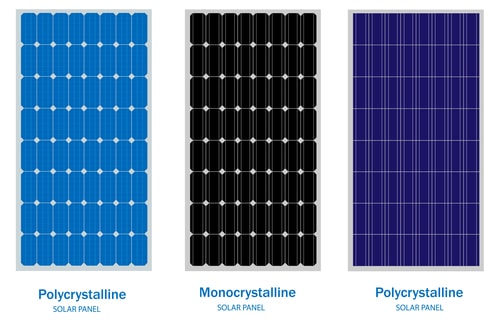
High-efficiency Monocrystalline panels use the best materials and get the most electricity out of a solar panel per square inch.
You’ll need fewer high-efficiency panels which lowers the costs of framing, labor, time, BOS, etc.
Lower-quality solar panels will produce less energy, which means you’ll need more of them, which in turn requires more labor and BOS parts.
With solar panels, you’ll need more of them if they’re less efficient than other choices.
A/C solar panels have a micro-inverter already built into the panel to reduce labor costs and provide maximum installation flexibility. There are no requirements for how many A/C panels must face the same direction or be on the same roof face.
Beware of cheap solar panels. Can the solar panels your dealer suggests handle the weather?
Are the panels designed and tested to endure extreme weather conditions for over 25 years?
Your roof can be 50 degrees hotter than the outside air in the summertime. Can your solar panels stand up to that kind of heat and then the freezing temps in the winter?
Will your solar panel manufacturer be around in 10 or 20 years if you need warranty work done?
Can the dealer show you any testing the manufacturer has done?
Over the last decade, over 200 solar panel manufacturers have gone out of business around the world.
The US tariffs imposed in recent years added another 25 bankrupt solar panel manufacturers to that list.
Who makes your solar panels matters a lot if you want them to be around to service your warranty years from now.
For more info, see our article “What solar panels are made of.“
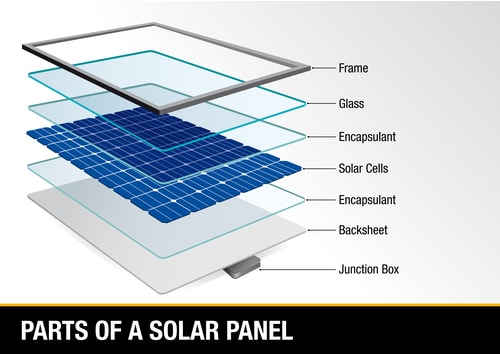
The quality of the solar cells and their solder bonds (called busbar wires) matter.
Solar panels endure extreme weather conditions on a roof, and the constant expansion and contraction of changing temperatures alone put tremendous stress on those cell connections within a solar panel.
Companies that cut corners on these materials are finding their panels failing after installation at higher rates.
The quality of the PV module glass and encapsulant films matters.
The outer glass and inner films that protect the solar cells (encapsulant films) are extremely important to protecting the solar cells and their connections by keeping the weather out (moisture, heat, UV rays, and more).
Is the outer glass tempered? Can it stand up to the weather, including hail storms?
Once again, when companies cut corners on these materials, solar panel failure rates have shown to increase substantially.
The quality of the backsheets used matter.
The black or white backsheet material used can also affect the lifespan of some PV modules. Where poor quality material was used, solar panels have decayed from inside out, causing premature module failures.
The quality of the framing matters.
As solar panel manufacturing competition increased, some companies lowered their prices by making their solar panel frames thinner to reduce the aluminum costs.
Cutting corners in the solar panel framing has also been shown to cause premature panel degradation and module failures.

Product warranties will affect solar panel costs.
As you can see, all solar panels are not created equal.
WHO makes your solar panels matter.
And how they stand behind their solar panels with product warranties matter.
There are two warranties for solar panels, a product warranty, and a power output warranty.
California requires every solar manufacturer to warranty the power production in 20 years to be at least 80% of its original power output.
But if the product goes out before that 20th year, the product warranty is what matters.
That power output warranty, however, is superseded by the solar panel’s PRODUCT warranty.
Many solar panel manufacturers warranty their PV module products for ten (10) years. Labor is often not included in PV module product warranties.
Some high-quality, high-efficiency panel makers provide 25-year product warranties.
Some solar panels have no product warranty because they’re closeouts from already bankrupted companies.
Be sure to ask for a copy of the product warranty of any solar panels being offered to you.
Inverter choices will affect your solar panel pricing.
There are a few different types of inverters that convert the direct current (DC) electricity that solar panels produce into the alternating current (AC) electricity your home uses.
- box inverters.
- micro-inverters attached to each panel (AC panels).
- power optimizers on each panel that works with a box inverter.
Inverters have an efficiency rating that reveals the percentage of electricity they can convert from DC to AC power for your home.
High-efficiency inverters should convert more than 95% of DC energy into AC power.
Box string inverters require more labor to install and are less efficient.
Box inverters require a minimum number of panels installed on each “string.” Therefore each roof face will need a minimum number of solar panels on it, which may or may not fit that space.
Micro-inverters and power optimizers allow for a more flexible solar panel design on the roofs. A single panel can be installed on one roof face if needed.
There can be significant price differences in inverter costs, depending on your system needs.
Your roof affects the total price.
The first roof factor will be how much space do you have for solar panels.
Limited roof space will require the highest efficiency panels possible to offset as much of your electric utility bill as possible.
A/C panels might help with roofs that have limited space. A single A/C panel can be installed on a single roof face if needed.
Which way your roof(s) face matters.
Ground mounts can usually be installed to face south and at nearly any angle, which is ideal for solar panels.
Roof mounts are a different story. You can’t move your roof around, so you’re stuck with which way your roof(s) are facing.
South is best. Solar panels that face the south produce the most electricity.
The next best in power output are roofs that face southwest, west, southeast, then east (avoid all north-facing roofs altogether due to inefficient production).
The more electricity each panel produces, the fewer panels you need, which affects your price.
The number of roof faces where solar panels are to be installed will also affect the final price.
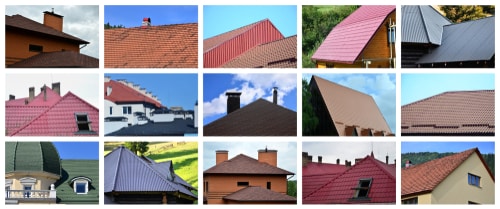
What type of roof you have affects the price of your solar panel system.
Roofs differ (shingle, tile, clay, or flat).
Asphalt shingle roofs are the easiest to install solar panels on.
Tile roofs require more work to install solar modules on than asphalt shingle roofs.
Clay tiles are very fragile and often break, and as such, they require the most labor to install solar PV.
Steep roof angles are also more challenging to work on, slowing a project down and increasing labor costs.
Flat roofs require a ballasted mounting system to hold the panels down against heavy winds, which adds to installation costs.
There is also less energy production on flat or severe roof angles.
Ground mounts require digging and setting concrete footings. The footings will require building permits with the local jurisdiction. Ground mounts also require additional racking.
Is solar monitoring included?
Monitoring the energy output of your solar panels adds around $500 to the price of a system, which is a lot for small systems but not much for larger systems.
But if you want to know your solar panels are working, you’re going to need monitoring.
If you’re not monitoring your system, you won’t know it’s not working until you notice increased electric utility bills.
Monitoring alerts you to system underperformance and outright power outages.
It could be something as simple as leaves on your panels or trees that have grown and are now shading them, to downright system failures.
Does your installer offer real time solar monitoring? Real time solar monitoring plans take the burden off the homeowner to check for and respond to alerts, offer reduced service rates and peace of mind. Learn more about our real-time solar solar monitoring service.
Does your electrical service panel need an upgrade?
A site inspection by the solar installer will examine your electrical service panel to ensure it has the proper rating and available space for the solar breaker.
If an upgrade to your service panel is needed, it can add $1500 to $3500 to your total system cost.
A pre-sale solar site inspection will examine the service panel to ensure it can handle the solar breaker. The site visit will also inspect the roof space, roof age, shading on roofs, and potential wiring runs.
Do you want solar batteries to protect you from utility company power outages?
Because the solar panel system will be sending power into the utility company power grids, if there is a utility power outage, your solar system is designed to shut off also so it’s not sending power into the grid and endangering utility workers.
If you have needs or desires to have power even if there’s a utility power outage, then solar batteries to store the energy for those times are required.
Learn more on our article about solar batteries.
Do you really save money with solar panels?
Solar panels will pay for themselves over time. That timeframe will vary based on total costs, savings from utility electricity, and whether you’ve chosen a solar lease, purchase, or PPA.
The good news is if you purchased your solar energy system then at some point you own your solar electricity-free and clear, and all power your get from the system after that is paid for.
If you stick with your electric utility company instead, you’ll be paying them forever.
To crunch the numbers and learn more about this, see our article, “Are solar panels worth it?“
Federal income tax credits lower the cost of solar panels.
[2025 UPDATE] THESE TAX CREDITS NOW END ON DECEMBER 31, 2025 as a result of the 2025 Budget Reconciliation Bill passed by Congress and signed by the President July 4, 2025.Solar panel installation prices continue to decrease through the years.
The chart below shows that while solar panels prices have decreased slightly over the last few years, the biggest reduction in costs has come from “soft costs,” which include installation, permitting, interconnection, financing, etc.
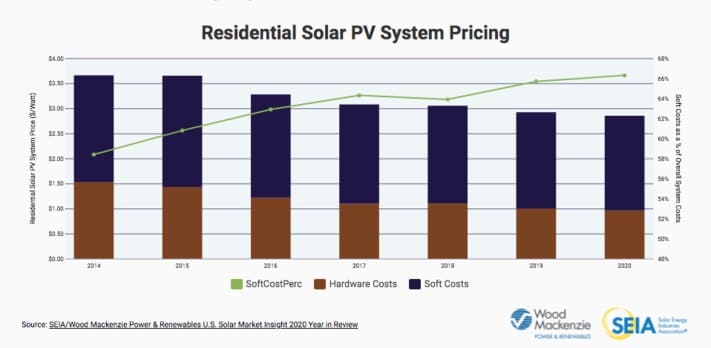
Image credit: SEIA
Summary
As you can see, many factors determine how much solar panels will cost to install on your home.
A free solar analysis done remotely is your best bet to zero-in on a more exact cost and what the payback period and savings would be.
A solar site inspection would be the next step to confirm that your roof space, shading, and service panel can handle the quoted installation.
Fore more details about the 10 biggest factors that come into play on the price you’ll pay, see our article, “How many solar panels do I need?”
As with all things, price is just one factor in your buying decision. The installer, product choices, product efficiency, warranties, and financing should all play a significant role in your final decision.
Check out our San Diego Solar Calculator to instantly get a rough idea of the cost of solar panels for your home.
Related articles:
2025 Federal tax credit changes for solar & solar batteries
Solar panel monitoring service
Battery storage system fundamentals
Peak Shaving: Invest in your home’s energy future for significant ROI
Why a battery makes financial sense with solar panels now under NEM 3.0
How long will a solar battery last during a power blackout?
How many batteries are needed to power your home?
How many years do solar batteries last?
Solar Battery or generator for emergency backup power?
How to check if your solar panels are charging the solar battery
Complete Guide to Solar PPA, Lease vs Buying Solar
How to choose a solar installer
Get a FREE solar anaylsis to see if solar energy or a battery is right for your home
- 2025 Federal Tax Credit Changes For Solar Panel Systems & Solar Batteries - July 8, 2025
- How Solar Batteries Work - March 4, 2024
- Solar Battery or Generator for Emergency Backup Power? - January 30, 2024

